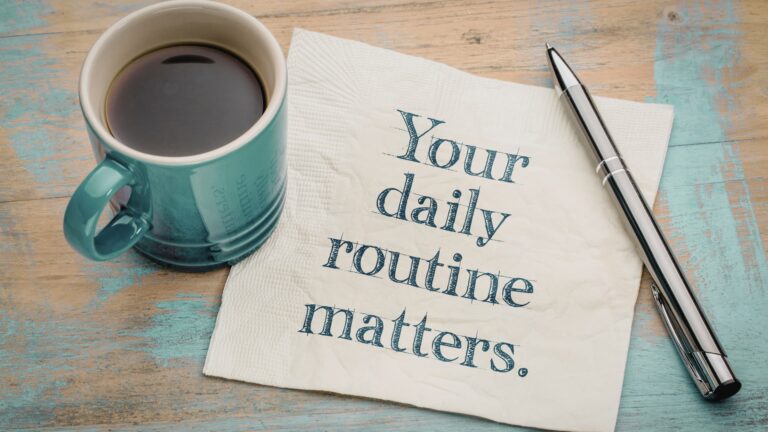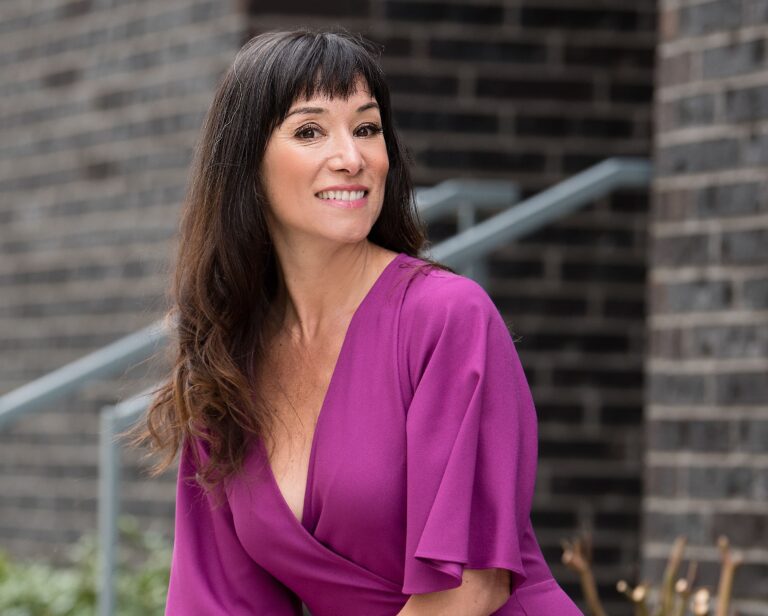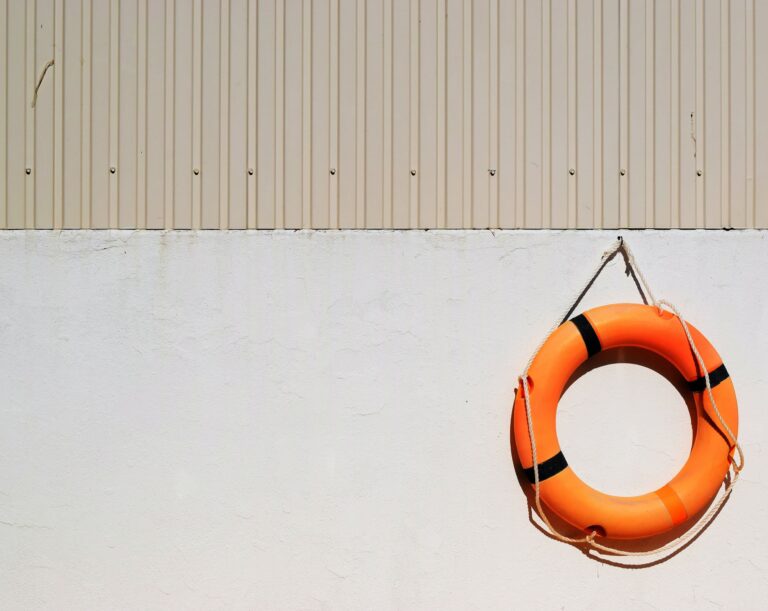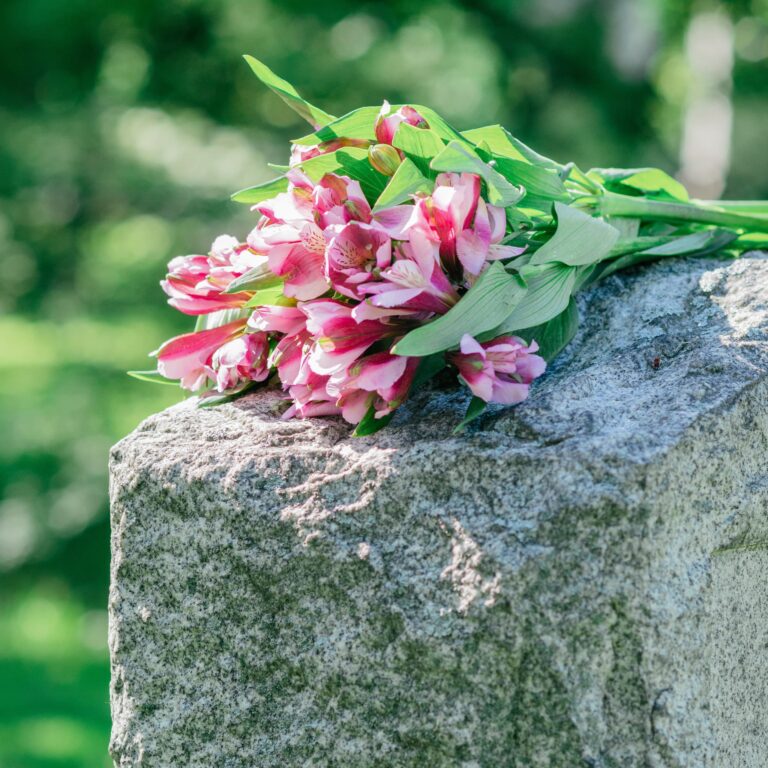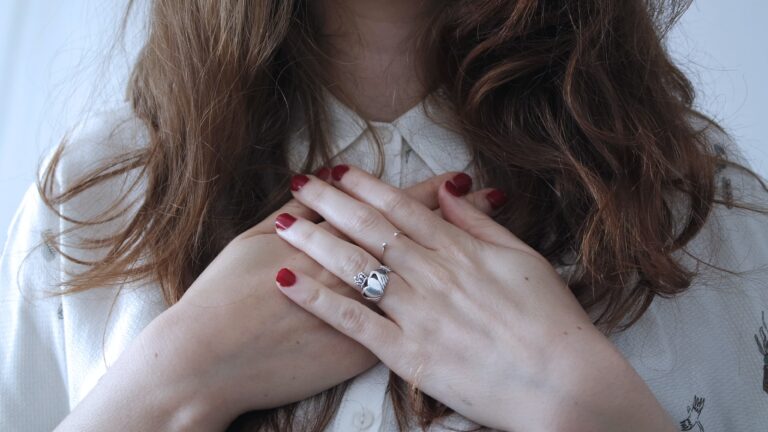Find Hope in Healing with Susan Hannifin-MacNab’s A to Z Healing Toolbox
It’s difficult to move forward after a profound loss, but following the death of her husband, Susan Hannifin-MacNab transformed her deep pain into a healing toolbox for others going through the rough journey of grief.
A seasoned social worker and educator, Susan’s multifaceted career and personal experience have culminated into the A to Z Healing Toolbox: A Practical Guide for Navigating Grief and Trauma with Intention, a guide that has reached and aided widows worldwide.
Key topics in this episode include:
- The need for a diverse set of tools to address the multifaceted nature of loss
- The importance of community and peer support
- Innovated approach to healing
This conversation promises to uncover the story behind the A to Z Healing Toolbox, its impact, and how Susan’s work and wisdom offer guidance through the universal experience of loss. Susan’s involvement with Soaring Spirits International and the Sugar Bear Foundation shows how dedicated she is to supporting the widowed and gold star military spouses.
Susan’s story, from the origins of the toolbox to her personal path through widowhood, helps uncover how community plays a crucial role in the healing process.
Listen to the Full Episode
Links + Resources From This Episode
- Susan’s website
- Susan’s book A to Z Healing Toolbox: A Practical Guide for Navigating Grief and Trauma with Intention
- Soaring Spirits International
- Camp Widow
- Sugar Bear Foundation
- Are you searching for emotional support, practical advice, and guidance on navigating widowhood? Join us in the Widow Squad membership.
Episode Transcript
Melissa: Today, we’ve got a special guest, Susan Hannifin-McNabb. After facing the sudden loss of her husband, Susan channeled her grief into something incredibly powerful, called the A to Z Healing Toolbox. It’s a set of practical tools for those navigating the tough road of bereavement. Susan’s not just the brains behind this initiative. She’s also a seasoned social worker and educator. Her book, A to Z Healing Toolbox: A Practical Guide for Navigating Grief and Trauma with Intention, is helping people across the globe deal with loss more effectively.
Besides that, she’s deeply involved with Soaring Spirits International, offering hope and support to the widowed community, and she supports gold star military spouses through the Sugar Bear Foundation.
Today, we’re diving into the story behind the A to Z Healing Toolbox, the impact it’s having, and how Susan’s work and insights can guide us through our own grief. So let’s get started and hear from Susan herself.
Susan’s Journey and the Creation of the A to Z Healing Toolbox
Melissa: If you wouldn’t mind, please share a little bit about your widowhood journey and how your journey led you to create the toolbox.
Susan: Thank you for having me. I guess I’ll start with the fact that I was already an educator in K-12, so I worked with kids. And then I was a social worker when I married Brent who was a bagpiper and a surfer and an international business professor. We lived in some cool places like Canada, Australia, and Hawaii. Our son was actually born in Australia. We were coming back to the US to resettle and kind of figure out the next steps since our son was starting kindergarten.
Brent went out for a drive in the local mountains and never returned. He was missing for two weeks, and we don’t really know what happened, but his car went off, and, and that was that. He died on July 15th. July 30th is when I got the knock on the door, and that was our wedding anniversary. And then, the next day was my birthday, and that’s the day I had to tell our son that his dad had died. So many of us have these dates that are just kind of wrapped altogether. On that July day, I became widowed.
I became a solo parent. I had enormous amounts of grief, obviously. And then what I didn’t realize is that I also had trauma from the two weeks where I was filing missing person reports. You know, there was a lot of chaos involved with that.
Melissa: During those two weeks, did your son understand what was happening, or how were you managing that?
Susan: Well, interestingly enough, Brent was a professor of international business. So, he was gone a lot. We went back and forth between countries. I didn’t explain to Jacob, “oh, dad’s missing.” I mean, a 5-year-old wouldn’t understand that. I just said, “dad’s working.”
So that’s what it was until I knew what had actually happened. I was already an educator, and I was already a social worker when Brent died. And I didn’t think I had any tools for this disaster, but it turns out I did because I knew what I needed to give my child, which was security, safety, and stability. And then I hit the ground running in San Diego, or I shouldn’t say running, I should say crawling, because you can barely function. But I started gathering resources here in San Diego and because I was a teacher type, and my brain is very left brain so things kind of had to be ordered, right? I was trying to create order out of my life, and I started collecting resources, then putting them into a binder.
So A was for the animal therapy helping us. B is breath work. I couldn’t breathe, even though my husband was a bagpiper and had tons of breath, I couldn’t breathe, so I had to relearn how to do that, from a variety of modalities. C was counseling therapy, because I dove into numerous types of therapy. So that’s kind of how the book came to be. It was very accidental. It wasn’t until I went to my first Camp Widow as a presenter that I presented the alphabet healing toolbox, and it was just a 26-page, little booklet.
And, they said, “where did you get this?” I said, “well, these are all the tools that I’ve been using.” These people said, “you have got to put this into a book.” And I said, “there is no way.” First of all, there was no way I wanted to go to a place called Camp Widow. And second of all, I am not intending to be an author. This is not my cup of tea. But eventually the right people showed up, and it became a book in 2018 is when it was published.
Melissa: So it’s a book and it’s also a toolbox. Right? Is it something you also work with other people on, like, just 1:1 or a group?
Susan: All of the above. Initially, it was a book. It’s called A to Z Healing Toolbox: A Practical Guide for Navigating Grief and Trauma with Intention. The chapters are short and succinct because it’s for the grieving and traumatized brain. But within each chapter are examples of how I utilize that tool and stories from other people who utilize that tool. And some single small steps people can take if they would like to maybe think about integrating that particular tool.
I also do solo coaching sessions with people, mostly widows, and some bereaved parents as well. I speak for organizations like the National Fallen Firefighters Foundation or working with Gold Star families. And then I run virtual groups as well. So those are for widowed people, and it’s anywhere from six to 10 people at a time. We meet virtually. I pull in guest speakers, and we run through the tools. We talk about all the different options that people have for healing.
Melissa: What part of your background as a social worker and an educator helped you in moving forward? Did your background help you at all?
Susan: That’s such a great question, Melissa. I have a friend, Tom Zuba, who wrote the forward in my book. He says life prepares us for life. And I feel like my professional life prepared me for my personal life.
I truly believe that it helped me immensely to be a social worker because I “social worked” my life, and my son’s life. But I was not prepared for the social, physical, spiritual, behavioral changes that were happening to me, or with me. I had no idea all of that was gonna be part of grief and trauma. So it helped but I also had no idea what I was getting into.
Melissa: I mean, nobody really talks about alone versus lonely. They’re two different things. We just did a big survey of widowed folks. And the number one thing they struggled with was loneliness. How do I navigate this? How do I not feel this? Or how do I overcome this? The second one is purpose. What’s my purpose now? I’m not a wife anymore. I’m this kind of this brand-new baby individual because my life has just been pulled out from under me. I just find that truly interesting because like you, I was a professional, a legal professional. I’m very good at making lists and looking through legal documents and contracts and all the paperwork, all the business stuff. Which I got an A+ at. But talking about managing my feelings or sitting with my feelings or, really processing, that didn’t come super easy to me.
I wonder if that is something that is familiar to you?
Susan: I’ve worked with hundreds of widowed people, and the rebuilding piece is huge. Rebuilding a sense of purpose, rebuilding self-esteem, just rebuilding. Because as you said, we are this brand-new baby person. It’s like everything has changed.
Now I may look the same. Right? People thought, well, she’s still tall. She still has brown hair. She still goes to the gym. But internally, I was completely changed. And that’s something widowed people understand, but everyone else doesn’t seem to.
Melissa: It’s like you’re starting from ground zero, and you’re not prepared. Nobody prepares you. There’s no way to prepare for this, for all of that rebuilding your life.
Susan: And what I say to people that I work with who ask me, “why is this taking so long,” or “I should be feeling better by now,” is , “look, your house was standing on a grassy meadow for a long time with your person and your dog and your cat, whatever was in your house. And then along comes the tornado, like the Wizard of Oz. Your house spins around 500 times. You get dumped out on Mars. You have no idea what you’re looking at. Nothing is the same. There are pieces everywhere. And your job now, after you’ve been turned around 500 times and dropped off on Mars, is to hurry up and figure it out.”
I mean, that’s impossible. So, I talk to people about how it’s one little piece at a time. You can go over to the rubble, pick up a piece. Does that piece fit anymore in your life? Maybe it does. Maybe it doesn’t.
And looking at all those pieces and trying to rebuild a sense of something takes energy. It takes time. It’s emotional energy, physical energy, spiritual energy, all of it. And that’s the beauty of hanging out with other widowed people or even bereaved parents or someone who’s had a trauma or a profound loss. People get that. The rest of the world does not.
There is power in communities, communities like the Widow Squad, communities like Soaring Spirits International, communities that can hold a space for what people are walking through.
Melissa: That’s a great visual.
Finding Hope and Community in Widowhood
Melissa: Early on in widowhood, was there a piece of advice or something somebody said to you that really was helpful and supportive?
Susan: I don’t know if there was one piece. It was just many, many, many different collections of things. I really found my first sense of hope when I attended Camp Widow in 2013, I had met a woman at the gym during the two weeks that Brent was missing, and she had just happened to tell me she was widowed with two young kids at home. Two weeks later, are you kidding me? Now I’m in your situation. And she said, look, I want to invite you to go to this place called Camp Widow. Well, I thought no, I’m not going to anything called Camp Widow. But eventually I did a year later.
And that’s when I saw 300 widowed people. I didn’t have to explain myself. Everybody was in various stages of pain and healing. I thought, okay, well, they, they look like they’re purposeful and they look like they’re thriving again. And they look like they’re not sobbing hysterically in the corner every day. I want that.
If they’ve done it, then I’m gonna figure out how to do this. And I came home and I put a piece of paper on my wall, and I just wrote down all the names of all the widowed people I was meeting, all the bereaved parents I was meeting. I was like, okay, Susan. You are not alone in this. Maybe you think you are, but you’re absolutely not.
We’re doing this together. The biggest takeaway, I think, for me early on was there are other people to help me. I don’t have to do this by myself. This feels awful. Like, I can’t even, right? We don’t have words to describe the immense pain but turn around because there’s a line of people who are going through the same thing, and it’s better if we do this thing together.
Melissa: Yes. Oh, amen. I went in 2011 to Camp Widow. I was eight months out. I was Googling everything, like, young widows, only parents, single mom, all the things. And it was really late one night, and up popped Camp Widow. I thought, maybe I’ll just go to San Diego and not even attend just so I can have a couple days to myself. Because I was solo parenting my two boys, and I needed a little bit of a break.
So, I signed up. It was on my birthday weekend. I didn’t tell anybody that. But just like you, I don’t remember the sessions I went to. I remember just seeing the sea of people that were in the same situation. We were wearing these name tags, these lanyards. We’re in the elevator. There are other events going on. And I remember this one gentleman got in the elevator and he’s looking at our lanyards and he was so freaked out. There are three or four of us in the elevator and we just started cracking up. It was just so so funny. It’s like, gosh, we made him really uncomfortable.
But it was just so freeing because I didn’t know anybody like me. I didn’t know anybody who was as young as I was or had two little boys and was working and doing all the things. It was eye opening to see people two or three years ahead of me thinking, well, I don’t know how they’re doing it. But they’re doing it and that’s possible for me. And so, it’s that little glimmer of hope.
I know you’re a big part of that organization.
Susan: Well, that organization, I literally say that it helped to save my life, and I think it’s helped to save so many lives. Just the hope and community and support that Soaring Spirits offers.
I’m now the programs and education manager for Soaring Spirits, and my biggest role is to support the regional social groups. We have about 85 peer support groups all over North America. And then one group in Ireland. And these are widowed volunteers staring a group in their community purely for social support. So maybe they’re meeting at restaurants or cafes or bowling alleys or movie theaters or parks.
Research has shown that peer connection is so hugely important as far as resilience goes. And, so I love the organization. I’ve been part of it now for, oh my goodness, 11 years, and I wouldn’t want to be anywhere else.
Empowering the Widowed: Finding Purpose and Healing Together
Melissa: It seems like every podcast we do, I somehow slip in Camp Widow in there. I can’t say enough good things about Camp Widow.
Susan: Me too. I keep saying to people, “I don’t have a magic wand to make this all go away.”
But what I do have with A to Z Healing Toolbox and Soaring Spirits International and the Widow Squad, I mean, there’s so much support out there and that’s the magic wand, like surrounding yourself with others who get it.
Melissa: Because I didn’t wake up at 5-years-old and say, “I’m gonna be a widow advocate and supporter.” You fall into it because you’re like, gosh, I don’t want anybody else to suffer as much as I did. If I can make it a little bit easier on somebody, I’m gonna do it.
Talk about finding a purpose.
Susan: Right. You trip into it. You’re thrown into the deep end. I also want to be clear that right for me, it’s been 12 years and for you it’s been 13.
So newly widowed people sometimes hear these podcasts and think we have it all together. Well, this is over a decade later. For me, it took a long time to feel like the boat had stopped rocking just so I could level my life out. It took years.
There’s so many layers and it takes time. So I would just say to people, just have compassion for yourself and know that it talks more time than society tells us.
Melissa: It’s baby steps, and it’s being really nice to yourself as you’re taking those babies baby steps.
If you if somebody came up to you and said, “Susan, what are one or two things I can do from your A to Z Healing Toolbox,” which one of those letters would you pick?
Susan: It’s a great question. And I guess what I would do first is trying to find out a little bit about them and what their interests are, what they gravitate toward naturally. For me, the tools I went to immediately were therapy, exercise, and the outdoors. Those are the three I use over and over and over and again. But somebody who really loves to write, maybe they want to start with journaling. Right? When a lot of folks are traumatized, the left side of the brain just shuts down. That’s where logic and order and reason is stored.
So flipping over onto the right side of the brain, there’s there are pictorial journals that folks can start. There’s something called an illustrated discovery journal, which is simply images collected in a journal. You can use an artist sketchbook, a glue stick, scissors, and magazines or catalogs, and you just flip through the catalogs and find images.
Some people naturally gravitate toward meditation. I guess the long-winded answer to that is I would really try to find out where their interests lie or what they naturally gravitate toward.
And the beautiful thing about the A to Z healing toolbox is there are 26 tools. You can open it to a chapter and see if that calls you. Is it organizing your support? Is it nutrition? Is it getting outside? I mean, there’s some that are so simple and yet all of these tools have scientific backing.
There are also a lot of us who have a trauma piece attached. And if you look at a Venn diagram, you have grief in one circle and trauma in one circle. There’s an overlap in the middle. Some people who are grieving are not traumatized. But there are a ton of people who are.
Especially with profound losses. Your husband died suddenly. Or medical losses where you’re watching the person you love die, and you’re helping with the medical care. There are so many instances of trauma, and I wanted to make sure the book also addressed that. So there are certain modalities in the book that talk about trauma and how do we balance the nervous system and what some therapies are that can help, that maybe are nonverbal type of therapies, sand play therapy, for instance. I don’t know if you’ve heard of that, but that’s a wonderful modality where no verbal expression is needed. You’re just simply moving objects in a sand tray.
Melissa: Interesting.
Susan: There are so many different types of healing modalities that we can all use, and they’re all in the book.
Melissa: We’ll share your book and all the details in the show notes. Before we wrap up, where can people find you or is there anything coming up that you’re really excited about or projects that you’re working on?
Susan: I would say the best place to start is on my website, which is a2zhealingtoolbox.com. There is tons of information there. I also run virtual groups quarterly. Some groups have been with me for a year and a half. They just keep saying, I want to do another 10 weeks. I want to do another eight weeks. So, the new groups will be starting sometime in mid-April for folks who are interested. They can just send me an email at susan@atozhealingtoolbox.com. They can also find me all over Soaring Spirits at susan@soaringspirits.org.
I’m just all about helping widowed people because there are no words for this journey. And I got so much help and assistance from those walking ahead of me. So now I want to turn around and help those who are coming behind.
Melissa: Well, thank you so much for everything that you’re doing for the widowed community. I’m so glad we reconnected.
Susan: Thanks for having me.


